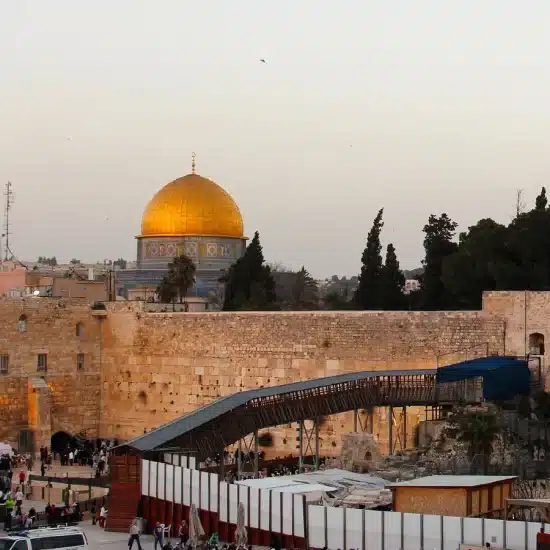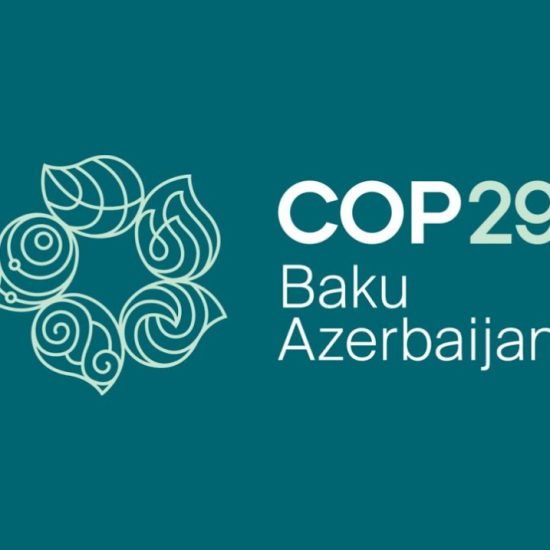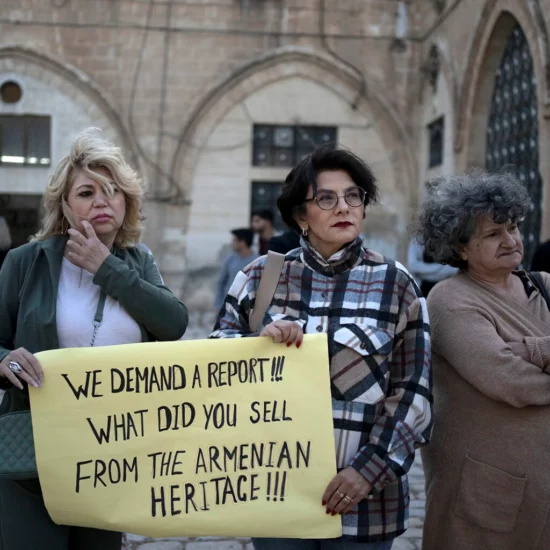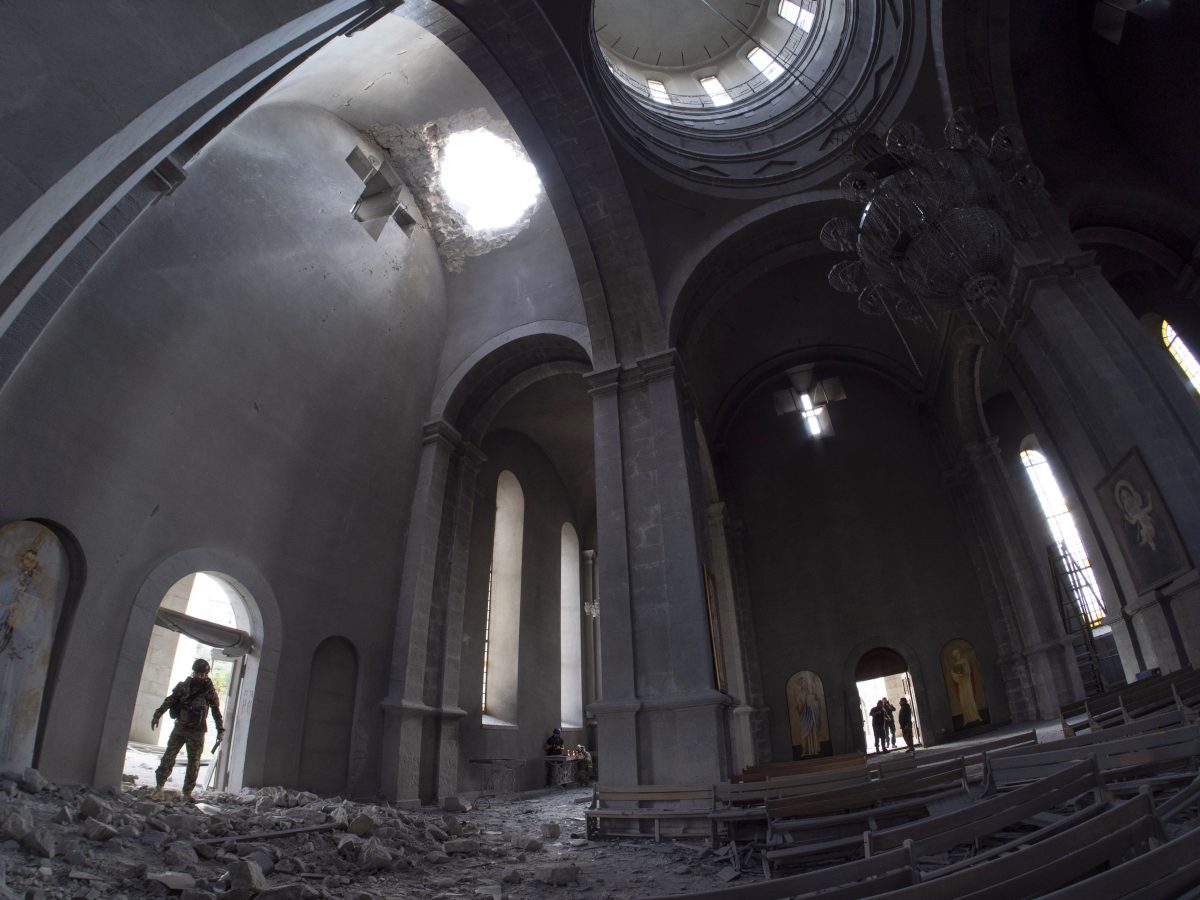
YEREVAN, Armenia (AP) — Armenia accused Azerbaijan on Thursday (Oct. 8) of shelling a historic cathedral in the separatist territory of Nagorno-Karabakh, where nearly two weeks of heavy fighting has killed hundreds of people. The Holy Savior Cathedral, also known as the Ghazanchetsots Cathedral, had its dome pierced by a shell that also damaged the interior.
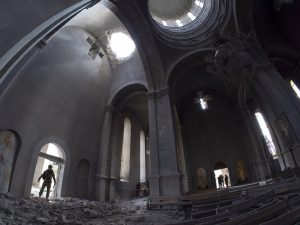
A hole made by shell in the roof of the Holy Savior Cathedral damaged by shelling during a military conflict, in Shushi, outside Stepanakert, self-proclaimed Republic of Nagorno-Karabakh, on Oct. 8, 2020. (AP Photo)
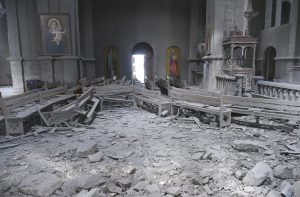
An interior view of the Ghazanchetsots (Holy Saviour) Cathedral. (David Ghahramanyan/NKR InfoCenter PAN Photo via AP)
Media reports said some children were inside the cathedral in the town of Shusha at the time of the shelling, and although they were not wounded, they suffered from stress after the attack. Hours later, the cathedral came under more shelling that wounded two Russian journalists, one of whom was hospitalized in grave condition, according to Armenian officials.
The Armenian Foreign Ministry denounced the shelling as a “monstrous crime and a challenge to the civilized humankind,” warning Azerbaijan that targeting religious sites amounts to a war crime.
Azerbaijan’s Defense Ministry denied attacking the cathedral, saying its army “doesn’t target historical, cultural and, especially, religious buildings and monuments.”
A priest at the cathedral, who identified himself only as Father Andreas, expressed anguish over the attack.
“I feel the pain that the walls of our beautiful cathedral are destroyed,” he said. “I feel the pain that today the world does not react to what’s happening here and that our boys are dying defending our Motherland.”
Built in the 19th century, the cathedral suffered significant damage during ethnic violence in 1920. It was restored after fighting between Armenian and Azerbaijani forces in the 1990s and is part of the Armenian Apostolic Church.
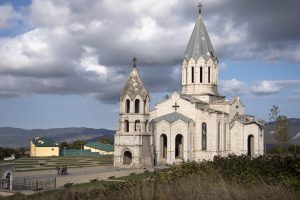
Men carry out furniture from the Holy Savior Cathedral. (AP Photo)
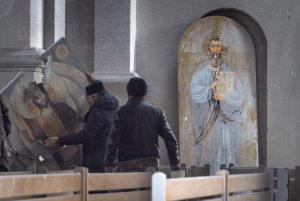
Men lift an icon in the Holy Savior Cathedral damaged by shelling. (AP Photo)
The latest outburst of fighting between Azerbaijani and Armenian forces began Sept. 27 and mark the biggest escalation of the decades-old conflict over Nagorno-Karabakh. The region lies in Azerbaijan but has been under control of ethnic Armenian forces backed by Armenia since the end of a separatist war in 1994.
Fighting with heavy artillery, warplanes and drones has continued despite numerous international calls for a cease-fire. Both sides accuse each other of expanding the hostilities beyond Nagorno-Karabakh and of targeting civilians.
According to the Nagorno-Karabakh military, 350 of its servicemen have been killed since Sept. 27. Azerbaijan hasn’t provided details on its military losses. Scores of civilians on both sides also have been killed. Also on Thursday, Azerbaijani officials accused Armenian forces of attacking several of its villages and towns, and Nagorno-Karabakh forces said they were “suppressing the activity” of Azerbaijani forces along the line of contact.
Stepanakert, the capital of Nagorno-Karabakh, has been under intense shelling. Residents are staying in shelters, some of which are in the basements of apartment buildings.
Facing international calls for a cease-fire, Azerbaijan made its condition on Armenia’s withdrawal from the region. Armenian officials allege Turkey is involved in the conflict and is sending Syrian mercenaries to fight on Azerbaijan’s side. Turkey has publicly backed Azerbaijan in the conflict but denied sending fighters to the region.
Russia, the United States, and France co-chair the so-called Minsk Group, which was set up in the 1990s under the auspices of the Organization for Security and Cooperation in Europe to mediate the conflict. They have called repeatedly for stopping hostilities and starting peace talks.
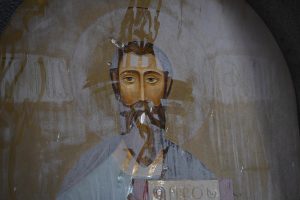
An icon covered with dust in the Holy Savior Cathedral. (AP Photo)

